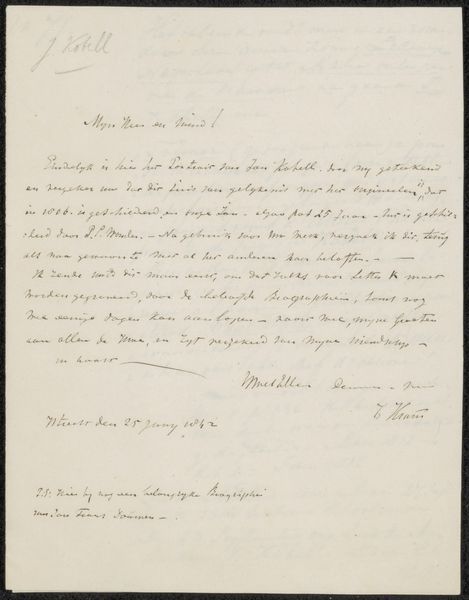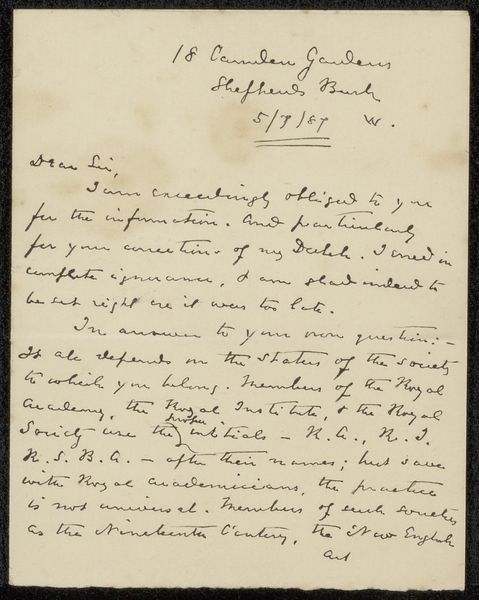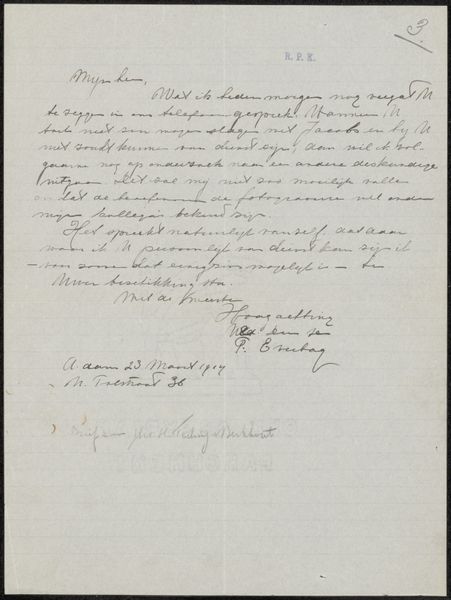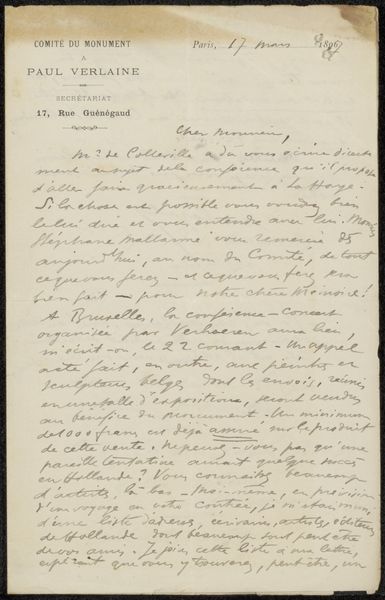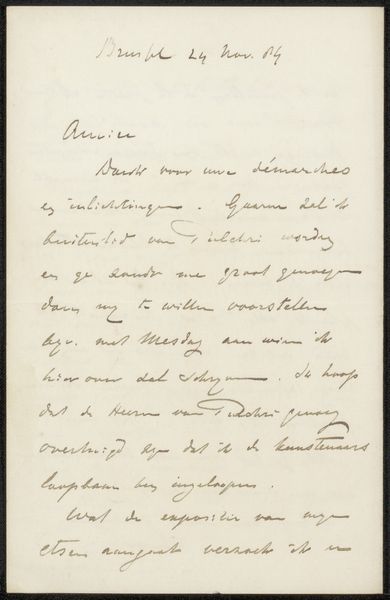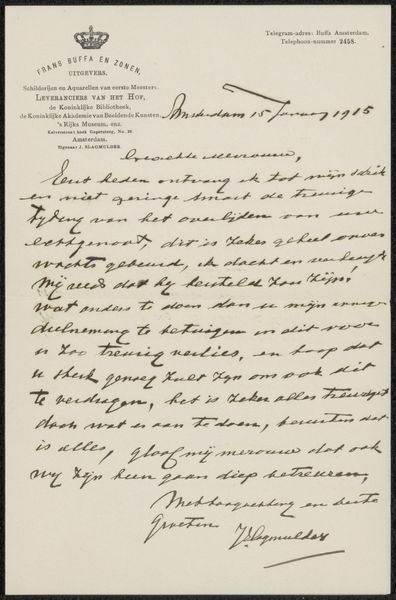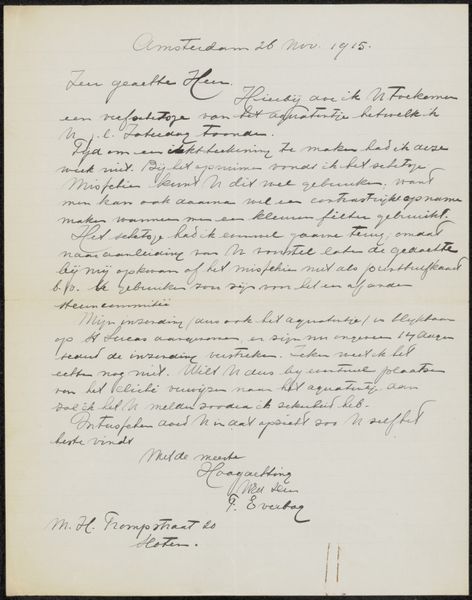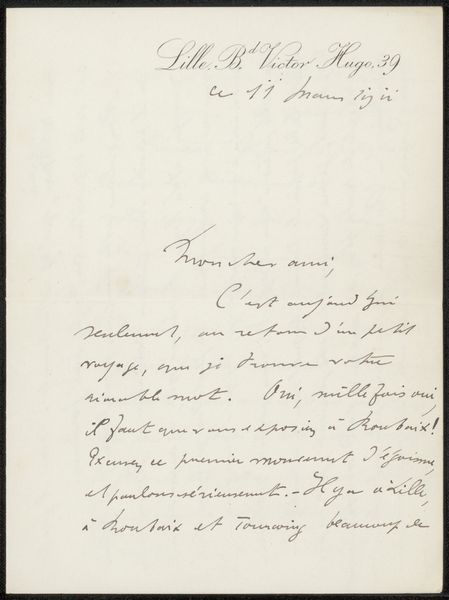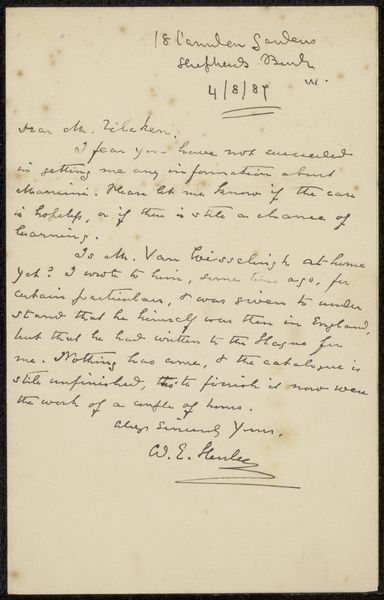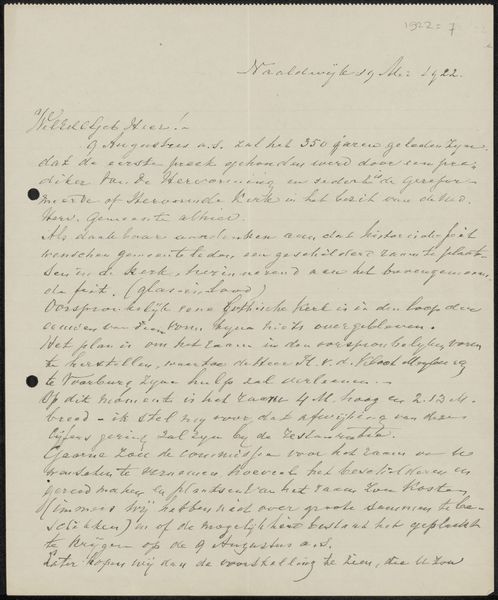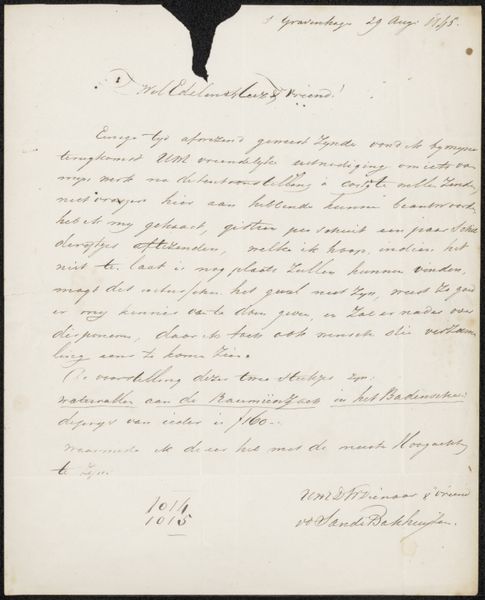
paper, ink
#
paper
#
ink
#
realism
Copyright: Rijks Museum: Open Domain
Editor: This is a letter, "Brief aan Jan Hendrik Maschaupt," possibly from 1873. It’s ink on paper and is housed at the Rijksmuseum. The handwriting, the stationary… it feels so personal and immediate. How do you read this artifact? Curator: The handwriting itself becomes a significant symbol. Each stroke, flourish, and abbreviation represents a specific intent and emotional inflection of the writer. How might this texture—the immediate, physical markings—contrast with a typeset letter? Editor: Well, printed text is more formal and detached… less intimate, for sure. Curator: Exactly. And think of what's conveyed even beyond the words themselves. Consider the type of paper, the letterhead—Goupil & Cie—a major art dealership and printer. These aren't merely functional aspects. They encode social status, artistic networks, even the evolving art market. Can you feel the pulse of a whole art world within this single page? Editor: Absolutely! The letterhead acts like a kind of seal of approval, linking the letter to a specific artistic context. Was Maschaupt, the recipient, likely an artist? Curator: It is certainly possible. What about the emotional undertones? Are there symbolic clues within the writer's tone—anxieties, hopes, or subtle negotiations taking place? We may only read "18 fevrier," but what larger story does this date hint at? Editor: I see what you mean. It's like this letter becomes a tiny portal to a specific moment and set of relationships within the 19th-century art world. That's incredible. Curator: Precisely! These everyday items are rich reservoirs of meaning. Examining them illuminates so much. Editor: I’ll definitely be paying more attention to the details in seemingly simple documents. It shows how much you can uncover through close observation and informed speculation!
Comments
No comments
Be the first to comment and join the conversation on the ultimate creative platform.
